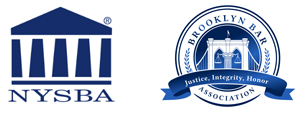It has been said that a good settlement is one where both sides walk away equally unhappy.
In a corporate dissolution proceeding involving several hundred acres of land, both sides went to trial after years of litigation despite numerous attempts to resolve the case. Finally, at trial, the shareholders came to a settlement as to the disposition of the real estate owned by the corporation, in which the acreage would be sold off to a real estate investor.
The stipulation of settlement was read aloud on the record before the judge, with each side of shareholders having been represented by counsel. [See footnote 1] The judge allocuted each of the parties as to their consent to the stipulation.
Almost a year after reaching the settlement, one side moved to set aside the settlement, claiming that the other side had a conflict of interest in failing to disclose his relationship with a third party who was going to purchase the property owned by the corporation.
Stipulations of Settlement are favored under the law
In the seminal decision of Hallock v. State of New York, 64 N.Y.2d 224, 230, 485 N.Y.S.2d 510, 474 N.E.2d 1178 [1984], the New York State Court of Appeals held that “Stipulations of settlement are favored by the courts and not lightly cast aside.” The statutory law embodied in Civil Practice Law and Rules [CPLR] 2104 upholds this longstanding case law. [See footnote 2]
Strict enforcement of stipulations not only serves the interest of efficient dispute resolution but also is essential to the management of court calendars and the integrity of the litigation process. Consequently, ‘only where there is cause sufficient to invalidate a contract, such as fraud, collusion, mistake or accident, will a party be relieved from the consequences of a stipulation made during litigation’ (id.; see, Hillcrest Realty Co. v Gottlieb, 234 A.D.2d 270, 271, 651 N.Y.S.2d 55, 56; Citibank v. Rathjen, 202 A.D.2d 235, 608 N.Y.S.2d 453, lv. dismissed 84 N.Y.2d 850, 617 N.Y.S.2d 139, 641 N.E.2d 160; Matter of Janet L. [Gillray L.], 200 A.D.2d 801, 803, 606 N.Y.S.2d 431, lv. dismissed in part, denied in part 83 N.Y.2d 941, 615 N.Y.S.2d 869, 639 N.E.2d 409).’ Robison v Borelli, 239 AD2d 656, 657 [3d Dept 1997].
Only ‘Good Cause’—fraud, collusion, mistake, duress or unconscionability—can set aside a stipulation of settlement
The motion to set aside the stipulation of settlement set forth a laundry list of allegations without any supporting proof (The affidavit simply alleged, “we are now very much concerned about fraud and collusion, as well as mistake or accident.”). Responding to the motion, Richard A. Klass, Esq., Your Court Street Lawyer, argued that no ‘good cause’ was proven and the motion should be denied.
In Myristica, LLC v Camp Myristica, Ltd., 201 AD3d 1078, 1080-81 [3d Dept 2022], the court declared that open court stipulations should be held to be iron clad and undisturbed absent good cause shown:
A stipulation of settlement placed on the record by counsel in open court is binding, all the more so when, as here, the parties contemporaneously confirm their acceptance on the record” (Birches at Schoharie, L.P. v. Schoharie Senior Gen. Partner LLC, 169 A.D.3d 1192, 1194, 94 N.Y.S.3d 412 [2019] [citations omitted]; see CPLR 2104). “To be enforceable, an open court stipulation must contain all of the material terms and evince a clear mutual accord between the parties” (Birches at Schoharie, L.P. v. Schoharie Senior Gen. Partner LLC, 169 A.D.3d at 1194, 94 N.Y.S.3d 412 [internal quotation marks and citations omitted]). “When a stipulation meets these requirements, as it does here, courts should construe it as an independent contract subject to settled principles of contractual interpretation [and] … courts should not disturb a valid stipulation absent a showing of good cause such as fraud, collusion, mistake or duress or unless the agreement is unconscionable” (McCoy v. Feinman, 99 N.Y.2d 295, 302, 755 N.Y.S.2d 693, 785 N.E.2d 714 [2002] [citations omitted]; see Hallock v. State of New York, 64 N.Y.2d 224, 230, 485 N.Y.S.2d 510, 474 N.E.2d 1178 [1984]; New York State Workers’ Compensation Bd. v. A & T Healthcare, Inc., 171 A.D.3d 1277, 1278, 101 N.Y.S.3d 212 [2019]; Liquori v. Liquori, 106 A.D.3d 1249, 1250, 966 N.Y.S.2d 543 [2013]).
It was urged that the motion did not set forth any cause to disturb the stipulation reached in open court. In React Serv., Inc. v Rindos, 243 AD2d 552, 552 [2d Dept 1997], the court specifically rejected this type of challenge to a stipulation of settlement, holding:
A party will be relieved from the consequences of a stipulation made during the course of litigation only where there is cause sufficient to invalidate a contract, such as fraud, duress, overreaching, or mistake (see, Hallock v. State of New York, supra; Matter of Frutiger, 29 N.Y.2d 143, 149–150, 324 N.Y.S.2d 36, 272 N.E.2d 543). Here, the plaintiff’s bare allegations of fraud, mutual mistake, etc., are insufficient to set aside the stipulation.” [emphasis added]
No complaining over a change of heart
It just became very obvious that the other side merely soured on the deal they struck – and decided to put up every obstacle to stop the corporate property from being sold.
It was requested that the judge take notice, as the court did in Stefanovich v Boisvert, 271 AD2d 727, 728 [3d Dept 2000], that the “defendants simply had a change of heart and decided that they no longer wished to comply with the terms of the stipulation or execute the previously agreed-upon boundary agreement. Neither defendants’ change of heart nor their belated attempt to argue a mistake … provides a valid basis for modifying the terms of the stipulation of settlement.” Based on the arguments set forth above, the judge denied the motion and upheld the stipulation of settlement.
Footnotes
[1]
This Court informed the parties of its binding effect by stating: “Recognizing that under CPLR 2104, a stipulation reached in open court is binding on the parties to this action. So, I’m going to first of all, with respect to counsel, ask counsel whether they agree and stipulate to the terms that have been placed on the record.”
[2]
CPLR 2104 provides: “An agreement between parties or their attorneys relating to any matter in an action, other than one made between counsel in open court, is not binding upon a party unless it is in a writing subscribed by him or his attorney or reduced to the form of an order and entered. With respect to stipulations of settlement and notwithstanding the form of the stipulation of settlement, the terms of such stipulation shall be filed by the defendant with the county clerk.”
Richard A. Klass, Esq.
Your Court Street Lawyer
keywords:
#CourtStreetLawyer #Stipulation #Settlement #newyork #litigation
Richard A. Klass, Esq., maintains a law firm engaged in civil litigation at 16 Court Street, 28th Floor, Brooklyn, New York. He may be reached at (718) COURT●ST or RichKlass@courtstreetlaw.comcreate new email with any questions.
Prior results do not guarantee a similar outcome.
© 2025 Richard A. Klass






